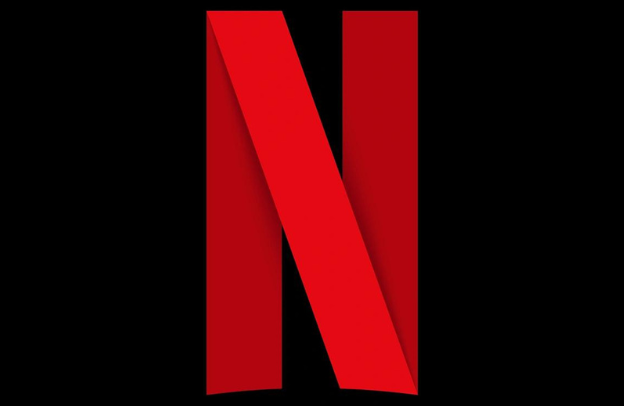The Netflix’s Storytelling Success: Standing Out in the Streaming Wars

In today’s fast-paced digital landscape, effective storytelling can be the key to setting your business apart from the competition. Nowhere is this more evident than in the digital media and entertainment space, where giants like Netflix have leveraged the power of storytelling to rise from a modest DVD rental service to a global streaming powerhouse.
Want to learn more about storytelling? Start by downloading the first chapter of The Storytelling Mastery.
For purpose-driven entrepreneurs looking to carve out their own space in a crowded market, Netflix’s journey offers valuable insights into the art of crafting a compelling narrative. I mean the type that resonates with audiences and drives business growth. If that is what you are looking for, then sit back and relax because this is going to be a great conversation with a lot of value.
The Humble Beginnings: Netflix’s Start-Up Story
Imagine starting a business in the late 1990s with a simple yet innovative idea: renting DVDs by mail. That’s exactly what Reed Hastings and Marc Randolph did when they founded Netflix in 1997.
See also 5 Best Ways Netflix Uses Storytelling And How Other Businesses Can Replicate The Same
At the time, Netflix was a small operation with a unique value proposition: convenience. Customers could order DVDs online, receive them by mail, and return them without the hassle of late fees. It was a novel approach that stood out in an era dominated by video rental stores like Blockbuster.
But what made Netflix truly different wasn’t just its business model; it was the story it told. Netflix wasn’t just renting DVDs—it was giving people their time back, sparing them the inconvenience of trips to the video store and late fees. It was a story of innovation, ease, and customer-centric service.
This narrative helped Netflix build a loyal customer base, even in its early days. For you as an entrepreneur, the lesson here is clear: start with a strong, relatable story that speaks directly to the needs and desires of your audience.
Your product or service may be unique, but it’s the story that will make it memorable. Never underestimate that and that leads us to create a Unique Brand Narrative.
Strategic Pivot to Original Content: Creating a Unique Brand Narrative
As Netflix grew, so did its ambitions. By 2011, the company made a bold move that would forever change its trajectory: it started investing in original content. This shift wasn’t just a business decision; it was a strategic narrative pivot.
Want to learn how to apply the same idea in your business? Check out “Own Your Story” our program which offers a structured path to success in less than 90 days.
With the launch of its first original series, “House of Cards,” Netflix began telling a new story about who it was and what it stood for. No longer just a platform for others’ content, Netflix became a creator, producing high-quality shows that drew viewers in and kept them hooked.
The strategy paid off handsomely. “House of Cards” wasn’t just a hit; it was a statement. It showed that Netflix could compete with traditional television networks and premium cable channels.
More importantly, it allowed Netflix to control its brand narrative fully. Instead of being dependent on the content of other studios, Netflix could tell its own stories, aligned with its brand values and designed to appeal to its unique audience.
See also Unlocking Success: How Purpose-Driven Entrepreneurship Fuels Business Growth
For purpose-driven entrepreneurs, the takeaway is powerful: when you have the opportunity, create and control your narrative.
Original content or, more broadly, original ideas can help you differentiate your brand and build a stronger connection with your audience. It’s about more than just being different; it’s about being distinct and owning your story.
Data-Driven Storytelling: Understanding and Predicting Audience Preferences
One of the most remarkable aspects of Netflix’s storytelling strategy is how deeply it is rooted in data. Netflix doesn’t just guess what its audience wants to watch; it knows.
The company uses sophisticated algorithms to analyze viewer behavior, preferences, and viewing habits, allowing it to predict with uncanny accuracy which shows will succeed and which won’t.
For more on how to take your storytelling to the next level, check out “Own Your Story” our signature program which offers a structured path to success in less than 90 days.
This data-driven approach has been a game-changer, enabling Netflix to invest in content that is almost guaranteed to resonate with its audience.
Take “House of Cards” again as an example. Before committing to the show, Netflix analyzed data that showed a high percentage of its users had rented the original British version of “House of Cards.”
The data also indicated that films starring Kevin Spacey and those directed by David Fincher were popular among its subscribers. Armed with this information, Netflix made a calculated decision to invest $100 million in two seasons of the show without even filming a pilot.
This was a risky move, but it was a calculated one, based on a deep understanding of its audience’s preferences.
See also Conversion Conundrum: Turning Storytelling into Sales in an Increasingly Skeptical Market
For you, the lesson here is to leverage data to understand your audience at a granular level. This isn’t just about numbers; it’s about insights. What are your customers telling you through their actions, and how can you use that information to craft stories—or products—that they will love?
Do you want to own your story and leverage it in your business? Take this quick self-assessment survey to find out.
By understanding your audience deeply, you can predict what they want before they even know they want it, positioning your business as a leader in your space. Is that something you too can replicate in your business? I think it is. So, wake up to it.
Global Expansion and Local Adaptation: Telling Stories that Resonate Globally
As Netflix expanded globally, it faced a new challenge: how to tell stories that would resonate across different cultures and regions. The answer lies in a strategy of local adaptation.
Rather than assuming that a one-size-fits-all approach would work, Netflix invested in localized content, producing shows like “Money Heist” in Spain, “Sacred Games” in India, and “Squid Game” in South Korea.
These shows weren’t just successful; they became global phenomena, drawing viewers from around the world and showcasing Netflix’s ability to tell diverse stories that appeal to a wide range of audiences.
This strategy of global expansion through local adaptation is a masterclass in storytelling. It demonstrates that while the medium may be global, the message often needs to be local.
You might also like to see How To Make Your Stories More Engaging With Personal Qualities – The Business Storytelling Series
For entrepreneurs, especially those looking to expand into new markets, this is a crucial lesson. Your core brand narrative should remain consistent, but you need to be willing to adapt your stories to fit the cultural context of the new markets you enter.
It’s about balancing consistency with flexibility, ensuring that your brand resonates locally while still maintaining its global identity.
Building a Brand Through Failure and Iteration: Learning from Missteps
Even with its many successes, Netflix has had its share of failures. Shows like “Get Down” and “Marco Polo” were canceled after failing to attract enough viewers. However, rather than seeing these as setbacks, Netflix viewed them as learning opportunities.
Each failure provided valuable insights into what worked and what didn’t, allowing the company to refine its content strategy and make better decisions in the future.
This approach to failure is a powerful lesson for any entrepreneur. Failure is not the end; it’s a part of the journey. It’s an opportunity to learn, iterate, and improve. When you embrace failure as a natural part of the process, you free yourself to take risks, try new things, and ultimately craft a stronger, more resilient brand story.
Netflix’s willingness to learn from its mistakes also speaks to a broader truth about storytelling in business: authenticity matters. Your audience doesn’t expect you to be perfect; they expect you to be real.
See also The Power of Personal Stories: Creating Emotional Bonds with Your Audience
By being open about your missteps and what you’ve learned from them, you build trust and credibility with your audience, which is more valuable than any short-term success.
Engaging Audiences Through Multi-Platform Storytelling and Marketing
In the digital age, storytelling doesn’t happen in a vacuum. It’s a multi-platform, multi-channel endeavor that requires a cohesive strategy across various touchpoints. Netflix understands this better than most. All these were thoroughly explained in “Own Your Story” our program which offers a structured path to success in less than 90 days.
The company uses social media, email marketing, YouTube, and other channels to extend its storytelling beyond its streaming service, engaging with audiences in new and creative ways.
For example, Netflix’s social media presence is a key part of its storytelling strategy. By sharing behind-the-scenes content, engaging directly with fans, and creating platform-specific narratives, Netflix builds a deeper connection with its audience and keeps them engaged with its brand.
This approach not only strengthens the bond between Netflix and its viewers but also creates a sense of community and belonging among its subscribers.
As an entrepreneur, you can take a page from Netflix’s playbook by thinking about how you can extend your storytelling across different platforms. Each channel offers a unique opportunity to engage with your audience in a different way, whether it’s through social media, email, or even in-person events.
The key is to create a cohesive, multi-platform strategy that reinforces your core narrative while also offering fresh, engaging content that keeps your audience coming back for more.
Continuous Innovation and the Future of Storytelling in Business
Netflix’s success is not just a result of its past achievements but also its commitment to continuous innovation. The company is constantly experimenting with new technologies, formats, and storytelling techniques to stay ahead of the curve.
Business storytelling is the ultimate solution every purpose-driven entrepreneur needs today. Check out “Own Your Story” our signature program which offers a structured path to success in less than 90 days.
From interactive content like “Black Mirror: Bandersnatch” to advancements in artificial intelligence that personalize user experiences, Netflix is always looking for new ways to tell its stories and engage its audience.
For purpose-driven entrepreneurs, this commitment to innovation is a crucial lesson. The world of business is always changing, and if you want to stay relevant, you need to be willing to adapt and evolve.
See also Owning Your Story: 5 Powerful Lessons from Bryan Stevenson on Identity, Advocacy, and Impact
This means continuously experimenting with new ideas, taking risks, and pushing the boundaries of what’s possible in your industry. It’s about more than just staying ahead of the competition; it’s about staying ahead of yourself, constantly challenging your assumptions, and striving to be better.
Conclusion: Crafting Your Success Story in a Competitive Landscape
Netflix’s journey from a small DVD rental service to a global streaming giant is a testament to the power of storytelling in business.
By crafting a compelling narrative, leveraging data to understand its audience, adapting to new markets, learning from failures, and continuously innovating, Netflix has set itself apart as a leader in the digital media space. For purpose-driven entrepreneurs, these lessons are invaluable.
Your own story might be different from Netflix’s, but the principles remain the same. Start with a clear, compelling narrative that resonates with your audience. Use data to understand their needs and preferences deeply.
See also Your Story – Owning A Transformative Path to Professional Success
Be willing to adapt and change your story as you grow, and don’t be afraid to learn from your failures. Finally, always be innovating, pushing the boundaries of what’s possible in your industry.
By applying these lessons to your own business, you can craft a narrative that not only sets you apart from the competition but also resonates deeply with your audience, driving growth and success in a crowded market. So, take a page from Netflix’s book, and start telling your own story today.
Want to learn more about storytelling? Start by downloading the first chapter of The Storytelling Mastery.






